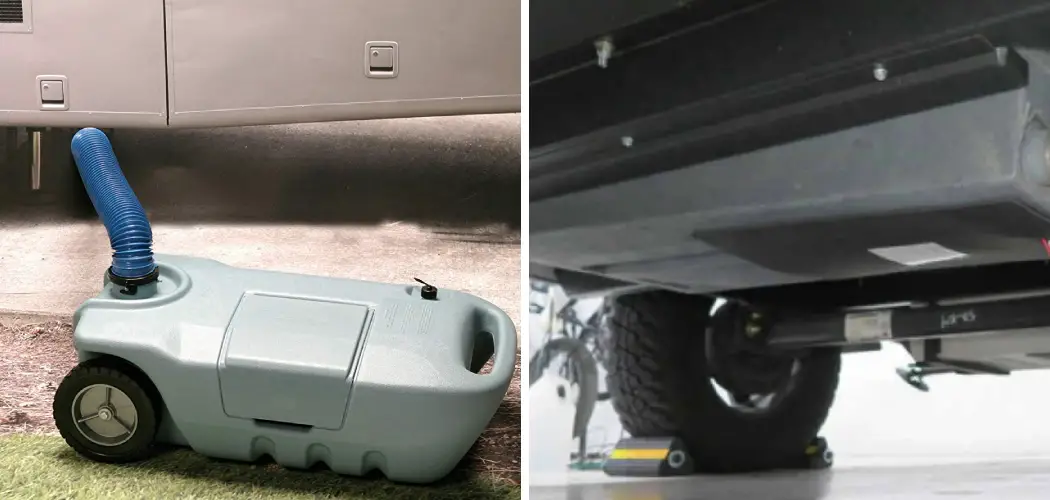Are you worried about your RV tanks freezing during the winter months? This can be a common concern for RV owners, but with the proper precautions and preparations, you can keep your tanks from freezing and avoid costly damages.
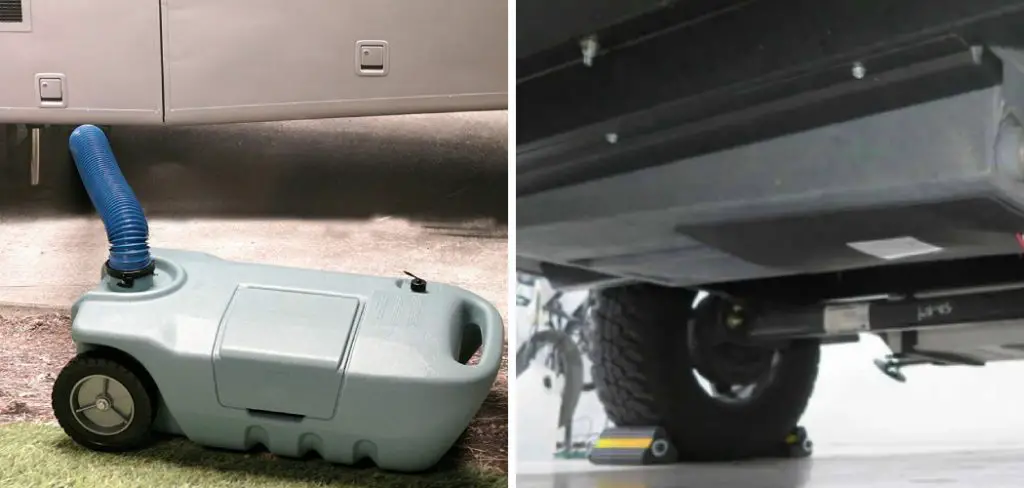
How to keep RV tanks from freezing is essential for maintaining the functionality and longevity of your recreational vehicle, especially during colder months. As temperatures drop, the risk of water and waste tank freezing increases, which can lead to costly damage and prevent you from enjoying your travels. By implementing a few practical strategies, you can safeguard your RV tanks and ensure a smooth, worry-free experience on the road, regardless of the weather conditions.
In this guide, we will explore practical tips and techniques for preventing freezing, allowing you to embark on your adventures confidently.
What Will You Need?
Before delving into the specific steps for preventing RV tanks from freezing, let’s take a look at the essential tools and materials you will need:
- Insulation materials such as foam pipe insulation, heat tape, or reflective bubble wrap
- Heating pads designed specifically for RV tanks
- RV antifreeze (non-toxic and safe for septic systems)
- Water heater bypass kit (optional but highly recommended)
- Sewer hose insulating hose wrap or heated sewer hoses
- A portable space heater (for extreme cold temperatures)
Having these items on hand will make it much easier to implement the strategies discussed below.
10 Easy Steps on How to Keep RV Tanks From Freezing
Step 1: Insulate Your Tanks
Start by insulating your RV’s water and waste tanks. Use foam pipe insulation or reflective bubble wrap to cover any exposed areas. This will help trap heat and prevent cold air from penetrating and freezing the tanks’ contents. Be sure to pay special attention to any vulnerable spots, such as tanks located in unheated compartments.
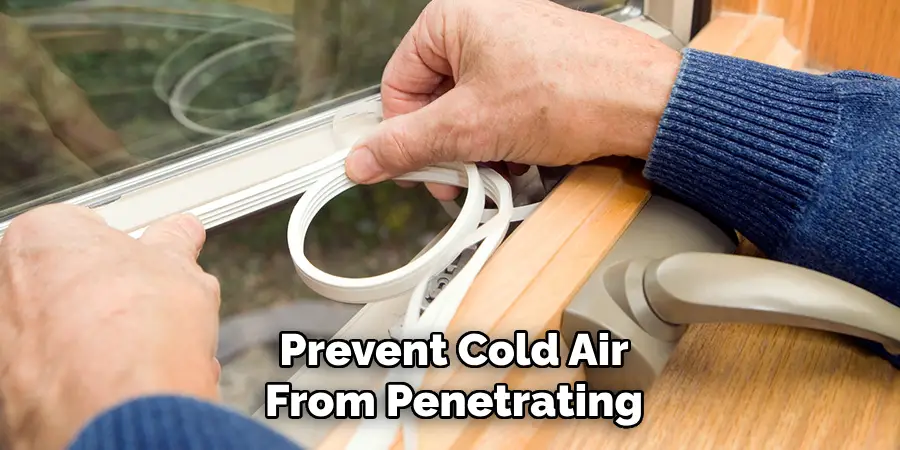
Step 2: Use Heat Tape
Apply heat tape to the exterior of your RV tanks and plumbing lines. This tape is designed to generate heat and keep the surfaces warm, which is especially helpful in icy environments. Follow the manufacturer’s instructions for proper installation, ensuring the tape is evenly applied and securely attached to prevent any chilly spots that could lead to freezing. Make sure to connect the heat tape to a reliable power source, and check it regularly to ensure it’s functioning correctly throughout the winter months.
Step 3: Add RV Antifreeze
Using RV antifreeze is another effective way to prevent your tanks from freezing. Pour non-toxic RV antifreeze into your fresh water system and waste tanks to lower the liquid’s freezing point. Be sure to use antifreeze that is safe for septic systems to avoid any environmental harm. Consult your RV’s owner manual for the correct amounts to use and ensure that the antifreeze is circulated throughout your system for optimal protection.
Step 4: Employ a Water Heater Bypass Kit
Installing a water heater bypass kit is a wise precaution that can help protect your water heater from freezing temperatures. When temperatures plummet, water in your heater can freeze, causing damage. Using a bypass kit, you can divert the water around the heater, minimizing the amount of water in the tank and reducing the risk of freezing.
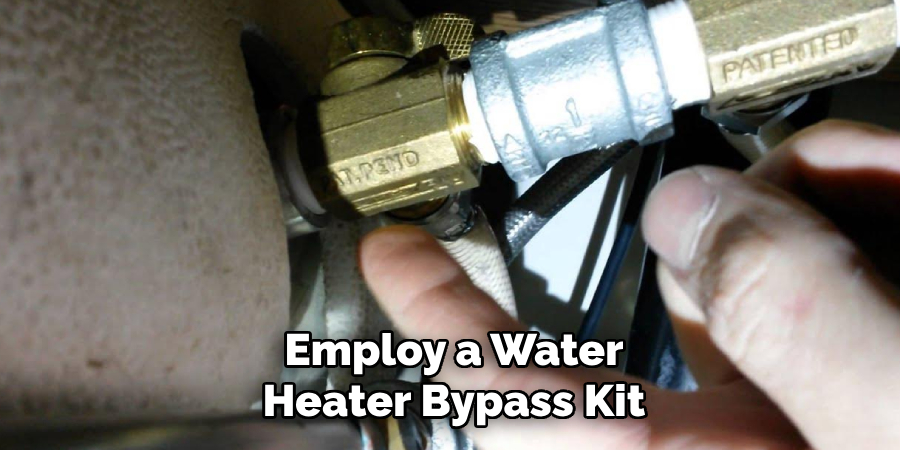
Follow the instructions provided with the kit to ensure proper installation, and operate the system correctly each time you prepare your RV for winter storage or travel. This simple step can save you from potential headaches down the road.
Step 5: Insulate Your Plumbing Lines
To further protect against freezing, insulate your RV’s plumbing lines. Use foam pipe insulation to cover any exposed pipes leading to and from your tanks. This will help retain heat and prevent cold air from reaching your water supply. Pay special attention to areas where pipes are unprotected or run along outside walls, as these are particularly susceptible to freezing temperatures.
Additionally, consider enclosing any plumbing lines within cabinets or other insulated spaces to provide extra protection against the cold. Regularly check your plumbing for any signs of leaks or damage, as maintaining the integrity of your plumbing system is crucial in cold weather.
Step 6: Use Heated Sewer Hoses
Consider using heated sewer hoses to prevent waste from freezing during colder months when winterizing your RV. These hoses have built-in heating elements that keep the contents flowing and prevent blockages caused by freezing temperatures. If heated sewer hoses aren’t available, insulating hose wrap can provide additional protection. Ensure the connections are secure and check regularly for any signs of wear or damage, ensuring an effective waste disposal system while traveling.
Step 7: Maintain a Slight Temperature Inside the RV
Keeping the interior of your RV at a slightly elevated temperature can significantly help prevent freezing. If you can access shore power, use a portable space heater to maintain a comfortable temperature, especially during extreme cold spells. Proper ventilation is essential to avoid condensation buildup, which can lead to mould and mildew. Additionally, consider using an RV-specific thermostat to monitor the interior temperature while away.
Step 8: Plan Your Travel Routes and Timing
Carefully planning your travel routes and timing is crucial during the winter months. Aim to travel during the warmer parts of the day when temperatures are higher, particularly if you anticipate crossing areas prone to extreme cold. Avoid traveling overnight or during severe weather conditions, as these can significantly increase the risk of freezing tanks.
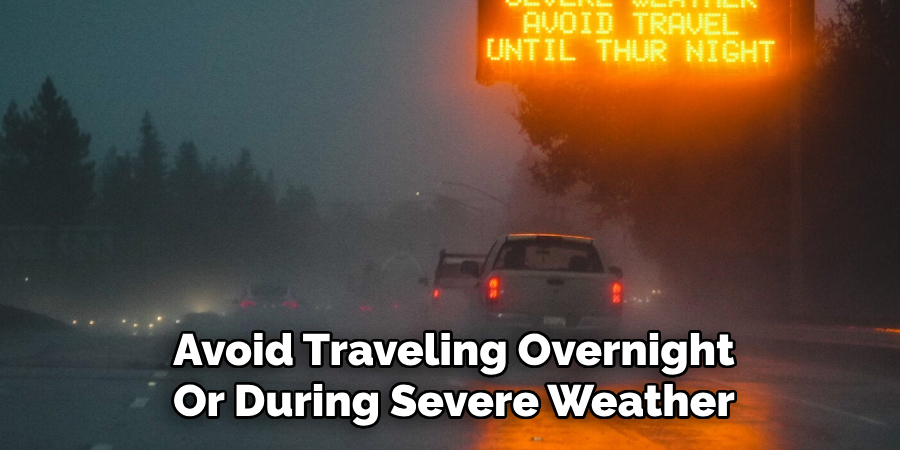
Additionally, consider the elevation of your routes; higher altitudes tend to see colder temperatures, which can exacerbate freezing issues. By being strategic with your travel plans, you can further reduce the likelihood of encountering freezing temperatures that could affect your RV tanks.
Step 9: Regularly Check Tank Levels
Monitoring the levels in your RV’s tanks is critical during winter months. Keeping your fresh, grey, and black water tanks at least partially complete can help prevent freezing. Water acts as an insulator, so liquid in your tanks provides a buffer against the cold. Conversely, try to keep your tanks from overfilling, as this can lead to issues with waste management and potential damage. Regularly flushing your tanks and ensuring they are not empty can enhance your freezing prevention strategy.
Step 10: Educate Yourself on the Weather Conditions
Stay informed about the weather patterns in the regions where you will be traveling or parked. Understanding the climate can help you anticipate extreme temperature drops and prepare accordingly. Utilize weather apps or local news to monitor forecasts and be proactive about any upcoming cold snaps. This knowledge will enable you to take necessary precautions in advance, ensuring your RV tanks remain protected and functional throughout your journey.
By following these steps, you can effectively prevent your RV tanks from freezing during the winter months.
5 Things You Should Avoid
1. Neglecting Regular Inspections:
Make sure to pay attention to regular inspections of your RV’s plumbing and tanks. Failing to check for leaks, cracks, or signs of wear can lead to significant issues, including freezing and damage during winter.
2. Using Non-Safe Antifreeze:
Do not use antifreeze that isn’t explicitly designed for RVs or unsafe for septic systems. Incorrect antifreeze can harm your RV’s plumbing and the environment, potentially leading to costly repairs or pollution.
3. Allowing Tanks to Go Empty:
It is essential to avoid allowing your RV tanks to run completely empty. Empty tanks are more susceptible to freezing, and having a bit of liquid can provide insulation against cold temperatures.
4. Ignoring Weather Forecasts:
Disregarding weather forecasts can lead to poor decisions about travel or storage. Being uninformed about upcoming cold snaps can result in inadequate preparations that leave your RV vulnerable to freezing conditions.

5. Skipping Insulation in Critical Areas:
Avoid skipping insulation for critical areas of your plumbing. Exposed pipes, especially those near outside walls or unheated spaces, are at a higher risk of freezing. Ensure all vulnerable areas are properly insulated to mitigate this risk.
By avoiding these common mistakes and following the steps outlined in this guide, you can protect your RV’s tanks from freezing during winter.
How Do You Protect Water Tank From Heat?
While freezing temperatures are a concern during winter, extreme heat can also cause issues for RV tanks. Here are some tips to protect your water tank from excessive heat:
- Insulate Exposed Pipes and Tanks: Just as insulation helps prevent freezing in cold weather, it can also protect against high temperatures. Ensure any exposed pipes or tanks are adequately insulated to minimize the effects of heat.
- Park in Shaded Areas: Whenever possible, park your RV in shaded areas to reduce direct exposure to the sun’s rays. This can help lower the interior temperature and alleviate strain on your water tank.
- Use Window Coverings: Installing window coverings such as shades or blinds can provide additional shade inside your RV, further reducing the amount of heat that enters.
- Park Near Water Sources: Parking near a water source, such as a lake or river, can provide natural cooling for your RV. The proximity to water can help regulate the temperature inside your rig, giving relief from extreme heat.
- Invest in an RV Awning: Installing an awning on your RV can provide shade and protection from the sun’s rays. This is especially beneficial if you are parked in an open area with limited shade options.
Following these tips, you can protect your water tank from excessive heat and ensure it remains functional during your travels.
Conclusion
In summary, how to keep RV tanks from freezing requires a combination of proactive strategies and careful planning.
Implementing the steps outlined in this guide—such as insulating plumbing, using heated sewer hoses, and maintaining a suitable interior temperature—can make your RV less susceptible to the harsh effects of cold weather. Regularly monitoring your tank levels and staying informed about weather conditions further enhances your ability to safeguard your RV.
By taking these precautions and avoiding common pitfalls, you can enjoy your winter adventures with peace of mind, knowing your RV’s plumbing system is well-protected against freezing temperatures.

